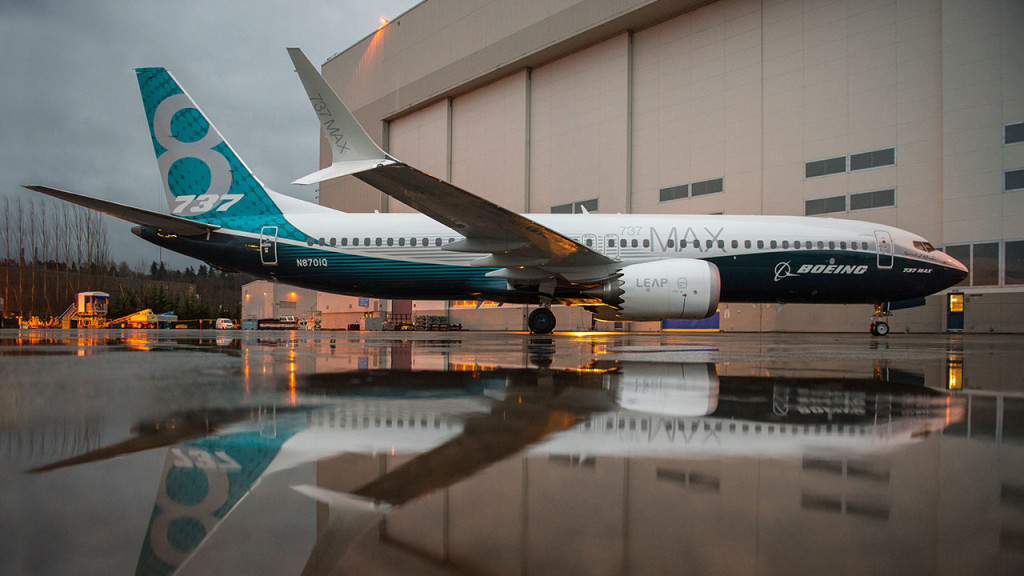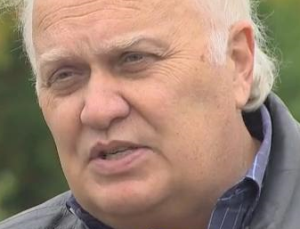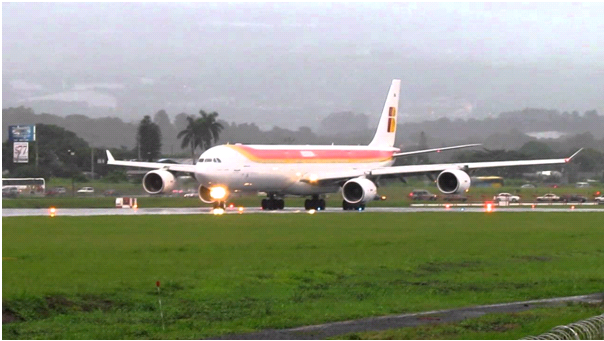Leeham News and Analysis
There's more to real news than a news release.
 Leeham News and Analysis
Leeham News and Analysis
- The Boeing 767 Cross Section, Part 1 November 24, 2022
- Movie Review: Devotion November 21, 2022
- China will accelerate development of its commercial aerospace sector November 21, 2022
- Bjorn’s Corner: Sustainable Air Transport. Part 46. eVTOL comparison with helicopter November 18, 2022
- The economics of a 787-9 and A330-900 at eight or nine abreast November 16, 2022
Air Canada orders up to 75 C Series; announced with BBD 2015 financial results
Feb. 17, 2016: The long drought is over.
 Air Canada has ordered up to 75 Bombardier C Series.The press conference is at 11am EST today. These will replace 25 Embraer E-190s. BBD now has orders and commitments for 678 C Series.
Air Canada has ordered up to 75 Bombardier C Series.The press conference is at 11am EST today. These will replace 25 Embraer E-190s. BBD now has orders and commitments for 678 C Series.
The announcement comes with the company’s fourth quarter and year-end financial results and a 90-seat version of its Q400 turboprop.
The Air Canada deal is a Letter of Intent for 45 CS300s and options for 30 more, including conversion rights to CS100s. Deliveries are from 2019.
- BBD to cut 7,000 jobs: Bloomberg News. The cut includes 2,000 contractors.
The earnings call webcast summary is below the jump.
Posted on February 17, 2016 by Scott Hamilton
Bjorn’s Corner: Exciting 2016
29 January 2016, ©. Leeham Co: In the corner of two weeks ago we did a retrospective of 2015. Time for looking ahead. The year of 2016 will be quite interesting. We had entry into service of the first re-engine single aisle aircraft this week, the Airbus A320neo, the same week as we expect first flight from its main competitor, Boeing’s 737 MAX 8. We will also see first flight of the Embraer E190E2 and A350-1000 before the year is over.
The Mitsubishi MRJ shall go test flying in earnest and Bombardier’s CSeries 100 and 300 shall enter service. On top of that, the COMAC 919 will probably start ground roll tests this year and we should see roll out of Irkut’s MC-21. I would say 2016 is a busy year for civil aviation.
In the 2015 corner we talked a lot about engine technology as a key driver to further efficiency of air transportation. Now will dissect the airframe technology that all these new projects will bring us. Read more
Posted on January 29, 2016 by Bjorn Fehrm
Pontifications: Shifting focus to Embraer
Jan. 25, 2016, © Leeham Co. Embraer announced last week it had cut metal on its first E195 E2, more than a month before the roll-out of the first E190 E2, scheduled for Feb. 25, at is Sao Jose, Brazil, plant.
The aggressive manufacturer of small(er) passenger jets is moving forward full speed toward its next generation of aircraft even as Airbus, Mitsubishi, COMAC and Irkut encounter one delay after another.
Posted on January 25, 2016 by Scott Hamilton
United chooses 737-700 over CS100 in big blow to Bombardier
 Jan. 21, 2016: United Airlines elected to order 40 Boeing 737-700s instead of the Bombardier CS100, it was announced today. It’s a huge blow to Bombardier, which was hoping to land this order to give a big boost to the CSeries program.
Jan. 21, 2016: United Airlines elected to order 40 Boeing 737-700s instead of the Bombardier CS100, it was announced today. It’s a huge blow to Bombardier, which was hoping to land this order to give a big boost to the CSeries program.
The reasons are obvious, even to an outsider, and don’t speak to the attributes of the CSeries, which remain compelling.
Here’s what we believe was behind the United decision:
Posted on January 21, 2016 by Scott Hamilton
The fuel effect; or old is beautiful
By Bjorn Fehrm
19 January 2016, ©. Leeham Co: When Willie Walsh, the CEO of IAG, said that the Airbus A340-600 “is a fantastic aircraft at fuel below $60 a barrel but perhaps not at $120,” he put operational words to something the Growth Frontiers 2016 conference in Dublin had been grappling with since it opened on Monday morning.
What is going to happen now? Crude is falling below $30 a barrel and Jet fuel is below $1 a gallon. This must have an effect on how people decide, whatever the lessors and aircraft OEMs say.
And it had to be a senior airline CEO that broke the mantra that everyone was repeating: “We don’t see fuel prices having any effect on fleet planning for airlines.”
Posted on January 19, 2016 by Bjorn Fehrm
Bjorn’s Corner: What did we learn in 2015?
08 January 2016, ©. Leeham Co: It’s the first Corner for the year and a look at 2015 as a year of technology advancements is due. 2015 will be remembered as the year when three clean sheet airliners passed important milestones. This will not happen for many years to come, so it will be worth to look at what they brought to world of aviation.
I’m thinking of Bombardier’s (BBD) CSeries getting certification for its first variant; the Mitsubishi MRJ doing its first flight’ and COMAC’s C919 being rolled out. Going forward, we will only have derivatives progressing through such milestones for years except for the roll-out of United Aircraft’s MS-21 single aisle airliner in 2016.
The Airbus A320neo was certified in 2015 and Boeing’s 737 MAX rolled out, but these are derivatives of in-service aircraft.
Embraer’s E-Jet E2 will roll out in February but this is a further development of today’s E-jet and Airbus A350-1000 is a variant of the in-service A350-900.
It will be a long time before we see so much new in a year, so it can be instructive to look at to what extent did these new aircraft bring the state of the art of airliners forward.
Posted on January 8, 2016 by Bjorn Fehrm
New aircraft programs’ sorry record of delay
Subscription Required.
Jan. 7, 2016, (c) Leeham Co. New aircraft programs used to be on time and a source of pride for the Original Equipment Manufactures (OEMs).
No longer. Delays are the norm, and despite “lessons learned,” there is little record so far that much has changed.
Boeing strives to turn this around with the 737 MAX. When the program was launched in July 2011, with a hasty decision to counter the Airbus A320neo order at American Airlines, Boeing forecast the first delivery would be in the fourth quarter of 2017 (October was the more specific target date). Within a year, Boeing revised this forecast to the third quarter, with July being the new target.
With the roll-out last month of the 737-8, Boeing so far appears to be on schedule for the new target. The plane hasn’t made its first flight yet, and plenty could still theoretically go wrong, but at least for now, things appear to be on track.
Embraer announced last month that the roll-out of its first E-190 E2 will be Feb. 25. The company has been tight-lipped about its timeline to date, other than a 1H2018 delivery target, but Market Intelligence indicates the roll-out is likely about a month sooner than had been planned. Suggestions by some that the MAX program is the “only” one on time are simply off the mark.
Posted on January 7, 2016 by Scott Hamilton
Airbus, American Airlines, Boeing, Bombardier, Comac, CSeries, Embraer, Irkut, Mitsubishi, Premium
737 MAX, 737-8, 777-200LR, 777-300ER, 777F, 777X, A320, A320NEO, A350, A380, Airbus, American Airlines, ARJ21, Boeing, Bombardier, C919, Comac, CS100, CSeries, E-190 E1, E-195 E2, E-Jet E2, Emrbaer E-190 E2, Irkut, MC-21, Mitsubishi, MRJ90
CS100 certified; We review CS100’s birth with VP CSeries, Rob Dewar
Introduction
By Bjorn Fehrm
21 December 2015, ©. Leeham Co: Bombardier (BBD) received certification of the smaller CSeries, the CS100, by Transport Canada Thursday. Rob Dewar, vice president of CSeries, reflected on the journey to certification in an exclusive interview with LNC.
The interview was done against a backdrop of more than two years of delays, which in turn drained the coffers of BBD. To save the project and let it prove its game-changing character, management sold 49.50% of the CSeries program to the Province of Quebec for $1bn and 30% of its train division to Caisse de dépôt et placement du Québec, for an additional $1.5bn.
Dewar has managed the project from the program launch in 2008. The transcript of the interview follows.
Posted on December 21, 2015 by Bjorn Fehrm
State investment in Bombardier further mockery of WTO
Nov. 24, 2015, (c) Leeham Co. With the $1bn investment by the Province of Quebec in the Bombardier ![]() CSeries program, another example of government funding emerges in commercial aviation development.
CSeries program, another example of government funding emerges in commercial aviation development.
Setting aside whether the investment might be challenged before the World Trade Organization—and whether this makes good business sense for Quebec—the move makes a mockery of the entire concept of avoiding government support.
Posted on November 24, 2015 by Scott Hamilton
The turbo-prop conundrum: small market, high costs

ATR Turbo-prop. Photo via Google images.
Subscription Required
Introduction
ATR and Bombardier are incumbents. China has a home-market offering.
Indonesia and India want to create a product.
It’s the 60-seat and up turbo-prop market.
It’s too many companies chasing too-small a market.
Summary
- The 20-year demand for 60-99 seat turbo-props is small.
- Developing a new, clean-sheet design is costly.
- There is a solid demand for an inexpensive 19-34 seat turbo-prop—but nobody is interested.
Posted on November 23, 2015 by Scott Hamilton
Email Subscription
Twitter Updates
My TweetsAssociations
Aviation News-Commercial
Commentaries
Companies-Defense
Resources
YouTube
Archives
- November 2022
- October 2022
- September 2022
- August 2022
- July 2022
- June 2022
- May 2022
- April 2022
- March 2022
- February 2022
- January 2022
- December 2021
- November 2021
- October 2021
- September 2021
- August 2021
- July 2021
- June 2021
- May 2021
- April 2021
- March 2021
- February 2021
- January 2021
- December 2020
- November 2020
- October 2020
- September 2020
- August 2020
- July 2020
- June 2020
- May 2020
- April 2020
- March 2020
- February 2020
- January 2020
- December 2019
- November 2019
- October 2019
- September 2019
- August 2019
- July 2019
- June 2019
- May 2019
- April 2019
- March 2019
- February 2019
- January 2019
- December 2018
- November 2018
- October 2018
- September 2018
- August 2018
- July 2018
- June 2018
- May 2018
- April 2018
- March 2018
- February 2018
- January 2018
- December 2017
- November 2017
- October 2017
- September 2017
- August 2017
- July 2017
- June 2017
- May 2017
- April 2017
- March 2017
- February 2017
- January 2017
- December 2016
- November 2016
- October 2016
- September 2016
- August 2016
- July 2016
- June 2016
- May 2016
- April 2016
- March 2016
- February 2016
- January 2016
- December 2015
- November 2015
- October 2015
- September 2015
- August 2015
- July 2015
- June 2015
- May 2015
- April 2015
- March 2015
- February 2015
- January 2015
- December 2014
- November 2014
- October 2014
- September 2014
- August 2014
- July 2014
- June 2014
- May 2014
- April 2014
- March 2014
- February 2014
- January 2014
- December 2013
- November 2013
- October 2013
- September 2013
- August 2013
- July 2013
- June 2013
- May 2013
- April 2013
- March 2013
- February 2013
- January 2013
- December 2012
- November 2012
- October 2012
- September 2012
- August 2012
- July 2012
- June 2012
- May 2012
- April 2012
- March 2012
- February 2012
- January 2012
- December 2011
- November 2011
- October 2011
- September 2011
- August 2011
- July 2011
- June 2011
- May 2011
- April 2011
- March 2011
- February 2011
- January 2011
- December 2010
- November 2010
- October 2010
- September 2010
- August 2010
- July 2010
- June 2010
- May 2010
- April 2010
- March 2010
- February 2010
- January 2010
- December 2009
- November 2009
- October 2009
- September 2009
- August 2009
- July 2009
- June 2009
- May 2009
- April 2009
- March 2009
- February 2009
- January 2009
- December 2008
- November 2008
- October 2008
- September 2008
- August 2008
- July 2008
- June 2008
- May 2008
- April 2008
- March 2008
- February 2008






